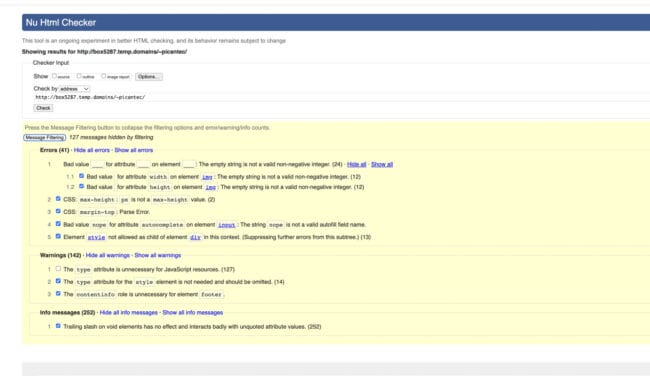
Rank Higher with SEO Coding
What Is SEO Coding?
Search engine optimization coding, also known as SEO programming or SEO coding, is the process of writing or rewriting your website’s code so it loads pages as quickly as possible and emphasizes the highest value content on each page, ensuring that search engines index it correctly.
In addition to optimizing for Core Web Vitals (discussed below), SEO coding incorporates the following:
- Structured Data Markup: Inserting expertly crafted metadata in the HTML provides additional information to search engines, which can facilitate search engine indexing and boost rankings.
- URL-Structure Optimization: Descriptive and keyword-rich URLs that reflect the content of the page help search engines understand them. For instance, this page’s URL is “…/seo-coding/,” our target keyword phrase.
- Coding for Responsive, Mobile-Friendly Design: Many websites that look good on desktop computers don’t look good on phones. That’s not only a usability problem; it’s also a ranking problem — ease of use on mobile devices is a Google ranking factor.
Lightening-fast Page Loads
an SEO Coding Case Study
With a custom refactor (rebuild) and migration to a high-performance web host, our SEO coding experts cut Picante Creative’s page-load speed in half, lowering it from 3.56 seconds to 1.62 seconds.
That’s a dramatic improvement in web development terms that will lower bounce rates and boost organic visibility.
Before

After

What Do Those Before & After Tests Mean?
The screenshots show test results for Core Web Vitals, a term Google began using in 2020 that encompasses three user-experience (UX) metrics in their search ranking algorithm.
Core Web Vitals references three UX metrics:
- Largest Contentful Paint: How quickly is above-the-fold content visible to users?
- Target < 2.5 seconds.
- Cumulative Layout Shift: How long, if at all, does the page layout shift unexpectedly as the page loads?
- Target < 0.1 seconds.
- Blocking Time: How quickly is the page ready to respond to user input?
- Target < 0.1 seconds.
The screenshots above illustrate that our rebuild (refactor) improved Picante Creative’s three scores from mediocre to excellent.
Why Do Page Load Speed and Core Web Vitals Matter?
Coding or refactoring (rebuilding) to optimize for user experience (UX) is fundamental to technical SEO because UX has become Google’s primary and ever-increasing focus, a shift that began with the Panda update in 2011.
Fast-loading pages with excellent Core Web Vitals also lower bounce rate, the ratio of visitors who visit only one page vs. those who stick around. Lower bounce rates indicate higher engagement, which usually correlates with more leads, sales, revenue, and profits.
How Much Does Page Speed Affect Bounce Rate?
The bounce rate increases dramatically for every second a page takes to load. A Google study found that the bounce rate on mobile devices increased by 32% as load time increased from 1 to 3 seconds.
Refactoring (rebuilding) your website to reduce page load time from 3 seconds to one can increase your site’s opportunities to make a sale or generate a lead by 32%.
Which Diagnostic Tools Identify Coding and Page-Speed Issues?
We use The W3C Validator, which flags HTML coding errors, and Google’s Page Speed Insights to identify page-speed issues.
The W3C Validator found 41 errors and 142 warnings on Picante Creative’s homepage.

Page Speed Insights found many issues, rating performance at only 50 (scale of 1 to 100).

Why Was the Site Loading Slowly?
There were many reasons. Most significant was the inefficient way Picante Creative’s drag-and-drop website builder handled popups. Rather than draw the popup only when a visitor requested it, the framework drew and hid all the popups when the page first loaded. Loading dozens of hidden popups (100s of megabytes) slowed the time required to display LCP (Largest Content Paint) above-the-fold content.
In our SEO rebuild, we coded each popup to activate only when visitors engaged it.
We made many additional programming improvements, which we implement with every SEO rebuild.
- Removed unneeded CSS, JS, and PHP code
- Built a custom admin UI for managing page content
- Moved plugin functionality into a custom theme, where appropriate
- Audited page performance to ensure the website loaded necessary assets only
- Used best practices to optimize image loading, image size, and font loading
- Moved the site to a high-performance hosting service
Our “after” test results illustrate significant improvements.
All Validator.W3 Errors Resolved

Google Page Speed Insights Shows Excellent Scores

Want Top Rankings? Don’t Overlook SEO Programming
Many small business owners choose “affordable” website creation tools and a “cheap” web hosting service to minimize expenses and stay afloat during their formative years. Picante Creative had followed this well-trodden path, using a drag-and-drop website builder and a low-priced web host.
Unfortunately, this cost-cutting approach can burden a website with ongoing performance issues that adversely affect search engine rankings and site usability, ultimately lowering company revenue and hindering growth enough to dwarf the dollars saved.
Professional SEO programming is an often overlooked search engine positioning method that can cost-effectively boost organic search engine results.
Our small business clients typically recoup their SEO programming investment in six months or less.
Central Virginia-based Charlottesville SEO Web Development can help your small business compete effectively against larger companies for top Google positioning with our thorough, ethical approach to search engine coding. Would increasing website traffic and engagement improve your company’s profitability? Send us a message or call us for a free quote.
Page Feedback – SEO Coding
Please take a moment to tell us why you visited this SEO Coding page. For example, “learning SEO,” or “wish to hire an SEO provider.”

